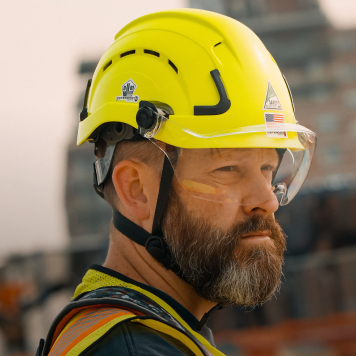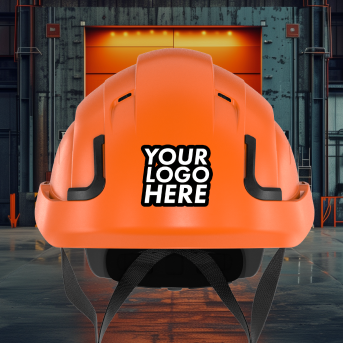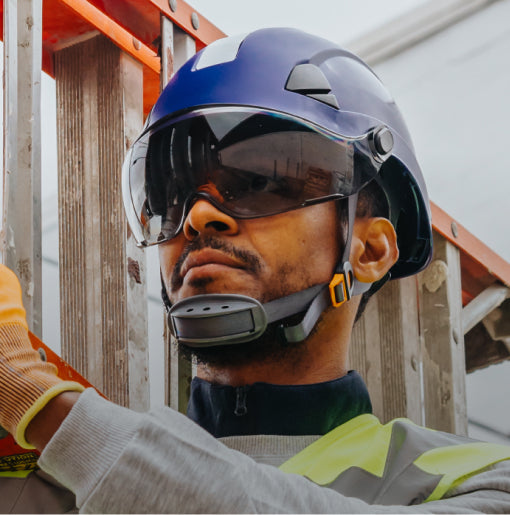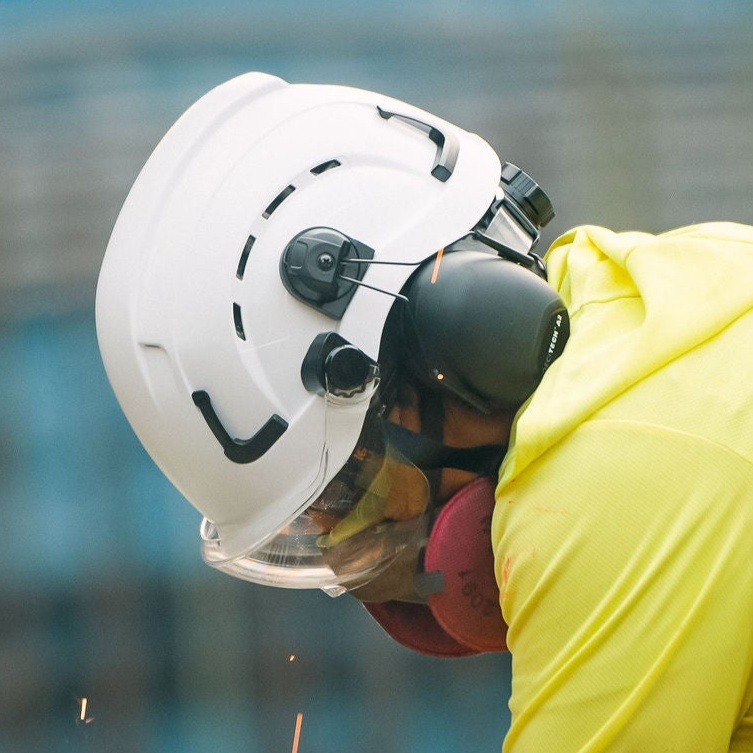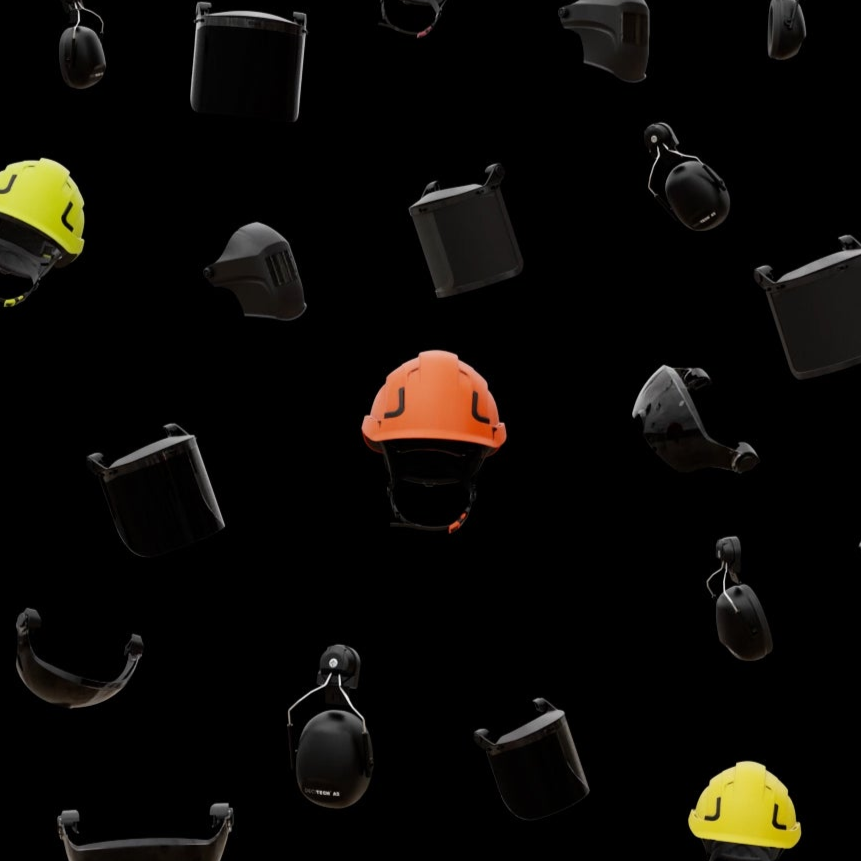Why do you need head protection?
Head Protection is one of the most important safety concerns in the workplace. Whether you work on a construction site, in a factory, or operating machinery, you need to ensure that you have proper head protection. While there are important legal requirements such as ANSI z89.1 to keep in mind, there are also optional features and personal preferences that play a part in deciding what head protection is right for you.
What are the optional features of helmets?
Additional features may contribute to more protection and specialization for helmets but are not required. These qualities are:
- Reverse Wearing
- High Visibility
- Higher and Lower Temperatures
The optional features allow for more choices so employers can ensure head protection in most environments. To consider these qualities, helmets must undergo extra testing and guarantee defense under specific possibilities.
- Reverse Wearing
Construction workers may wear their helmets backward. The helmet may fit better or provide better visibility when worn backward. However, when worn backward, the fit and area of impact may change and decrease protection. To be deemed suitable for reverse wearing, the helmets must display protection forward and backward. Type I helmets must pass the force transmission test when placed on the test head backward. Type II helmets must pass the force transmission, impact energy attenuation, and off-center penetration tests when placed on the test head backward. After passing these requirements, the helmet will be marked with a symbol of two arrows forming a circle. The mark makes reverse-wearing qualifications easy to identify.
- High Visibility
To be regarded as high-visibility, helmets must show the proper levels of chromaticity and luminance depending on the color. Chromaticity refers to the quality of color, and luminance refers to the quality of light. The table that this test is based on is shown below.  If it is within these standards, the helmet will be marked with an "HV" to indicate high visibility.
If it is within these standards, the helmet will be marked with an "HV" to indicate high visibility.
- Higher and Lower Temperatures
To be considered for hot or cold temperatures, helmets must be maintained at 60°C (140°F) for hot or -30°C (-22°F) for cold for four hours before each test. Then, the helmets undergo all required testing relevant to the type and class. If they pass the tests, the helmets are marked with an "HT" or an “LT” to indicate higher or lower temperature tolerance.
What helmet does Defender Safety offer?
The H1 helmet model at Defender Safety is Type I, with Class C and Class E options. The helmets comply with ANSI/ISEA Z89.1-2014, OSHA, and EN397-the European standard for head protection. The helmets provide high-quality safety and comfort at an affordable price. Design The Defender Safety helmet is designed with users in mind. The helmets have a high-visibility design with reflectors on the front and back. The Class C helmets are made with sliding breathable vents to ensure an enjoyable and convenient experience. Materials and Features The helmet has a built-in suspension system and chin strap designed to fit most sizes. Adjustable features on the suspension and the chin strap create a more comfortable experience for the user. And weighs only 1.94 lbs (880 g). Lightweight helmets assure a painless user experience and minimal strain on the head, neck, or back. This way, users can work comfortably and efficiently. The helmets are made from ABS (Acrylonitrile butadiene) and PC (Polycarbonate), which are common thermoplastic materials. Both materials offer strong impact resistance and structural stiffness. ABS is especially desirable because of its chemical resistance and electrical insulation. However, ABS has a low melting point, so it is not typically used in high-heat conditions. PC has a much higher melting point, making it more valuable for hot conditions. The combination of ABS and PC allows for the H1 helmet to have high impact, electrical, and heat resistance. Suspension Mechanism Each helmet has a 6-point suspension mechanism that is detachable and replaceable. The suspension allows for space between the head and the helmet. This guarantees that a user's head will not be affected by falling objects. Attached is a chin strap with effortless lateral adjustment and a removable chin cup. A sweatband is on the back of the mechanism to make the helmet comfortable for users. The sweatband efficiently absorbs sweat and prevents it from affecting the user's eyes on hot workdays. The chin strap provides a more secure fit to any head shape and improves safety. Accessories Attachable accessories are available to increase the safety and convenience of the helmet. These include:
- Earmuffs
- Visors
- Face Shields
The accessories are optional, but each supplies the user with additional protection against common problems in construction. All the Defender Safety accessories are ANSI approved as well. Earmuffs are a practical form of hearing protection in environments surrounded by loud machinery and vehicles. The earmuffs at Defender Safety have a noise reduction rate—a measure of the effectiveness of a hearing protector—of 24 dB (decibels). The earmuffs can be easily mounted onto most helmets, efficiently removed, and adjusted as desired. There is ample space inside the ear cups for breathability, and the leather allows for a sound-proof seal. Shop Defender Safety earmuffs. Visor attachments are intended to protect the eyes from flying objects and debris. The visor is easily attachable to the Defender Safety helmet and can be moved away from the face. Additionally, the visors are scratch resistant to prevent any decrease in visibility from gashes. Shop Defender Safety visors. Face shields, differing from visors, cover the entire face to protect it from facial injuries. A mounting bracket is necessary to attach the face shield to a helmet. The face shield and mounting bracket fit on most helmets. Swinging hinge points allow for the face shield to be adjusted and moved. This accessory has good airflow and a low center of gravity, so users are comfortable.
What are the takeaways?
Safety helmets are of utmost importance in the workplace. While it is important to ensure that your equipment meets OSHA and ANSI standards, it is also important to keep features and preferences in mind. Defender Safety offers helmets that not only meet the legal requirements but offer a wide variety of additional features and accessories to keep you safe and comfortable.
SHOP DEFENDER SAFETY HEAD PROTECTION
 If it is within these standards, the helmet will be marked with an "HV" to indicate high visibility.
If it is within these standards, the helmet will be marked with an "HV" to indicate high visibility.


